Get Ready to Save the Environment and your Energy Bills !!
Get in touch with us and we will be very happy to study your requirement and come up with cost effective Energy saving solutions, that are both environment friendly and budget conscious.
When sunlight falls on the photovoltaic (PV) solar panels, DC electricity is generated. DC is then converted into AC by the solar inverter.
The on-grid rooftop solar system (also known as grid-tie) is connected to the main utility power lines (KEB grid) and produces electricity during the day when grid is up.
This power is available for instant use OR exported to the grid, if unused. If at any time due to low sunlight, if system doesn’t generate enough power, it draws the power from the grid to make up the shortfall. Surplus power generated from panels that is not used is fed into the grid.
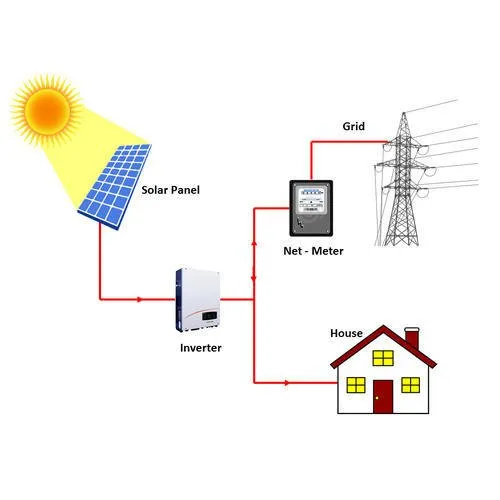
The bidirectional meters measure the solar generated electricity going into grid AND units drawn from the grid. At the end of each month, they are reconciled. The ‘net-consumption-units’ arrived at, are charged at grid tariff.
For the surplus ‘net-units-exported-to-grid’ CESCOM pays the consumer as per buy-back tariff agreed in the Power Purchase Agreement (PPA) valid for 25 years.
Many are opting for on-grid system as they get a credit for the excess power generated and save on their monthly electricity bills by captive consumption of solar power during the day.
Based on sun irradiance in the state, the guidance on power production is ~4Units/Day/KW of panels. It may generate above 5Units/Day during summer and below 4Units/day during rainy/winter season. 4Units/ KW/ Day on an average is a yardstick to measure RTS performance.
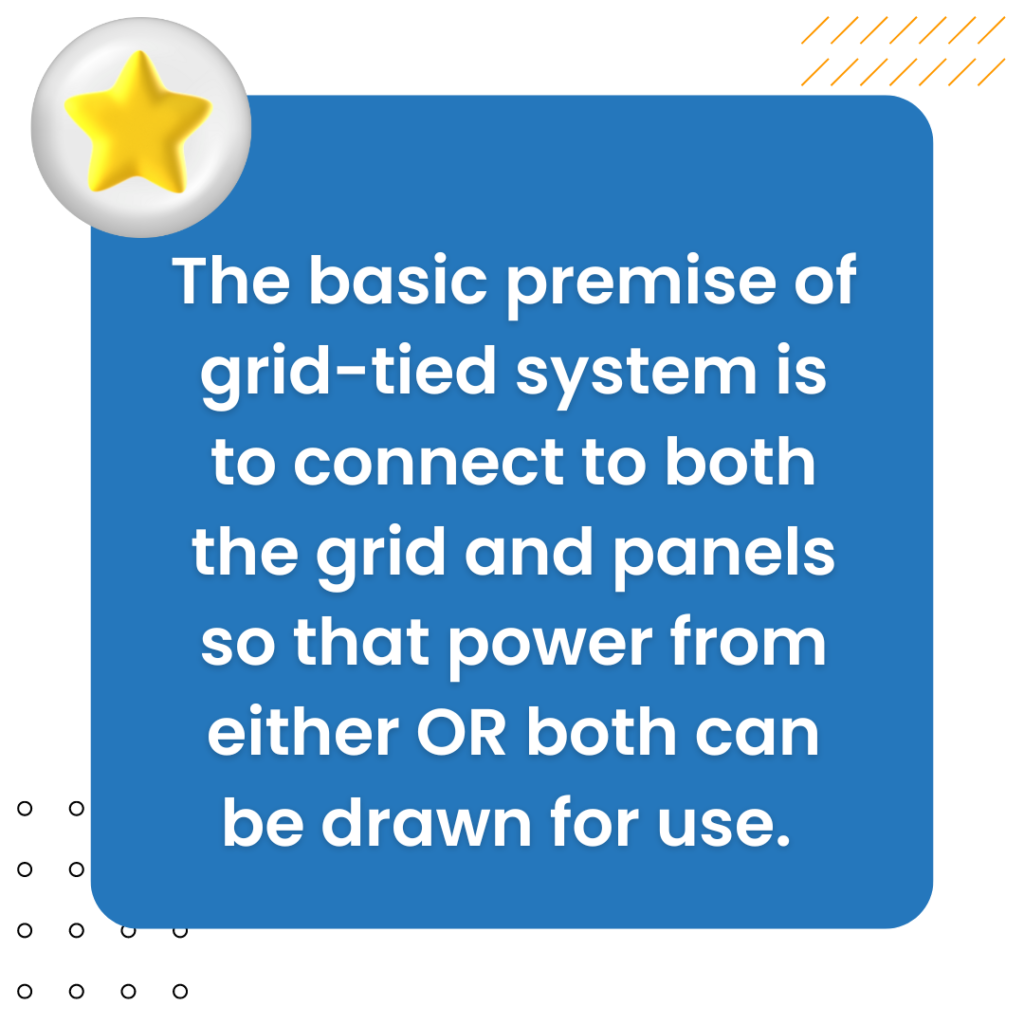
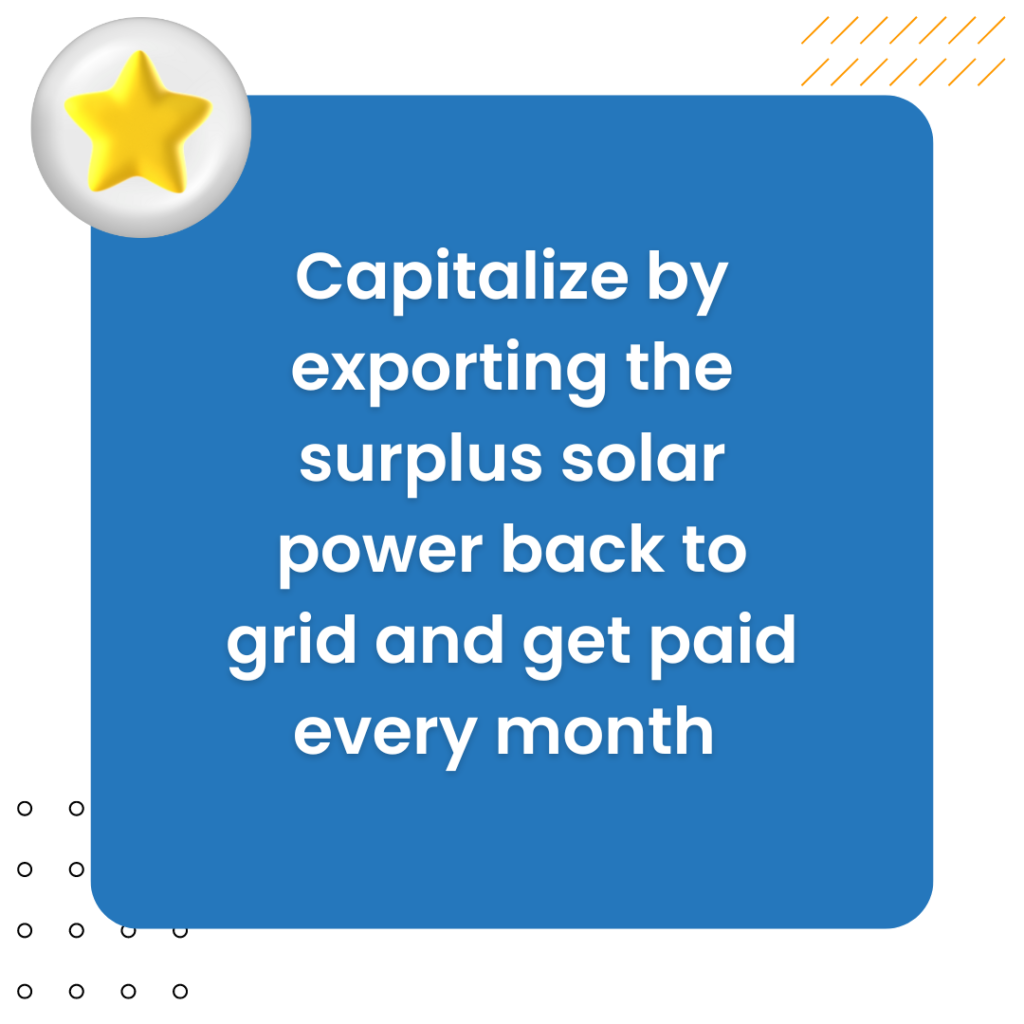
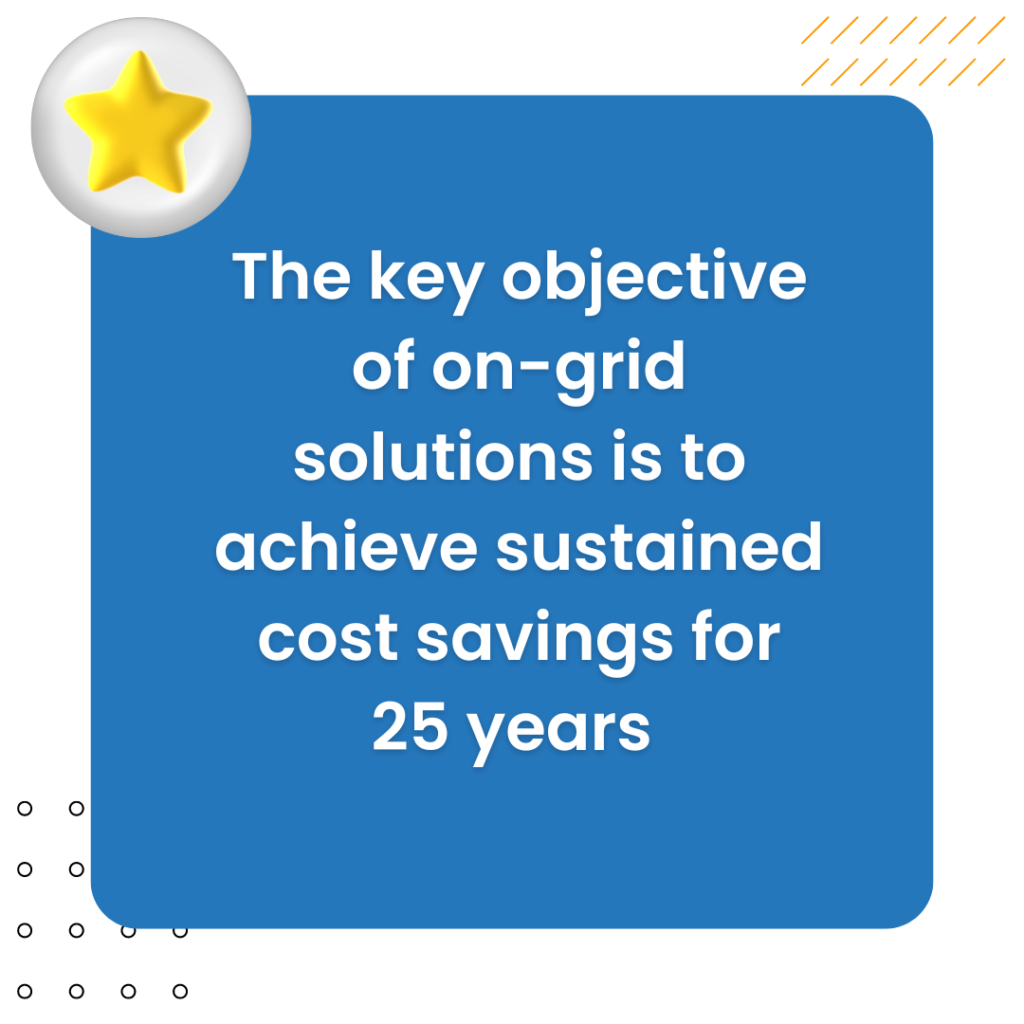
Among RTS solutions, on-grid systems require minimal number of components. Hence, they are least expensive. Grid-tie systems have:
In view of 25 Long Years of RTS lifetime, the components that constitute the solution are key to performance of an installation. Here are India’s Top Rated Brands that make our solution








Grid-tie RTS solutions not only requires good photovoltaic design understanding but also good knowledge of grid LT/HT electrical fundamentals. Knowledge on KEB/KREDL/Govt agencies’ procedural formalities for sanctions/approvals/policies is essential to guide customers w.r.t taking up right decision.
Go with an EPC vendor who is knowledgeable, provides the un-biased value-for-money solution to meet your exact requirements and NOT force-fit any standard solution to you.
Look for value-added services vendor offers, like liaison support with CESCOM /OEMs/Banks and NBFCs etc. so that going solar is made easy for you.
Among the 3 solar solutions (on-grid, off-grid and hybrid solar), on-grid RTS is the one that gets you the highest ROI and pays back in shortest period. Key points to note:
An indicative list of residential and commercial RTS projects’ cost-benefits.

“On-grid RTS solutions constitute 90% of SmartEco projects.”
We have been rated at 4.8 out of 5 that we are extremely proud of.
We have been featured in SiliconIndia publication as ‘10 most promising Green Energy Solutions Providers – 2023’ based on customer survey. ”
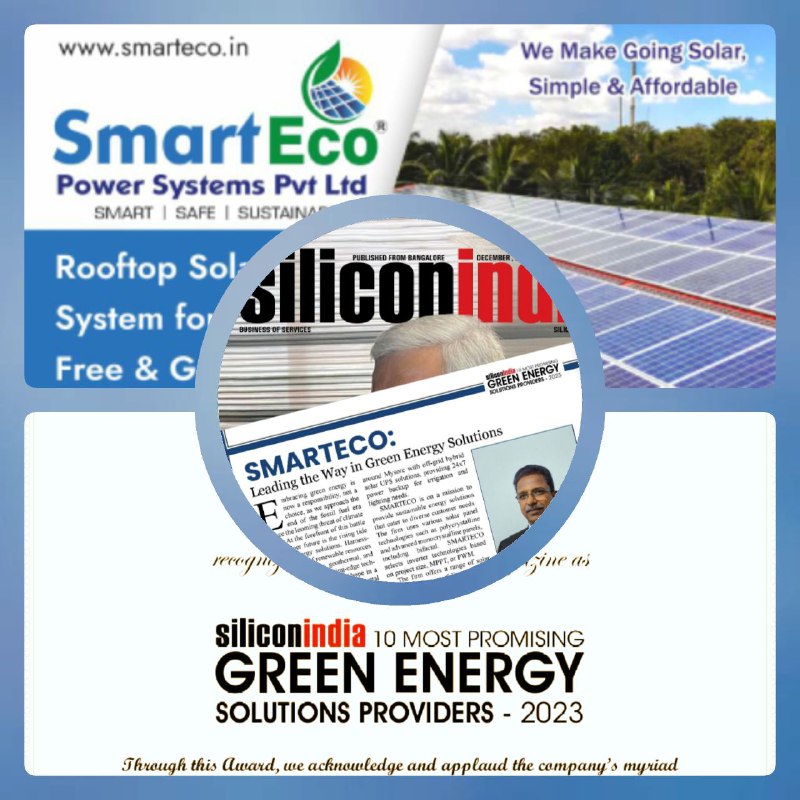
Our grid-tie solutions for both residential AND industrial combined together include several hundred KW capacity in total. We take care of 500KW+ RTS installations’ maintenance and performance monitoring as part of AMC support.
Rest assured, you will be in safe hands when it comes to ongrid-solar solutions.

Embarking on a cost reduction initiative, moved away from 100KW grid power to a fully self-reliant 40KW HT solar rooftop solution. Solution included energy audit, load reduction, right-sizing RTS with a super structure. Key highlights:


A hotel with considerable spend on electricity opting for 50KW Grid-tie solar as sustainable energy solution. Key highlights:
Significant cost reduction of Rs. 60-65K/month made possible thru this 50KW RTS installation. Highlights
A machine tool manufacturing industry unit, with over Rs. 75K monthly spend on power, adopting 40KW solar energy plant on rooftop.
Get in touch with us and we will be very happy to study your requirement and come up with cost effective Energy saving solutions, that are both environment friendly and budget conscious.
© 2024 by SmartEco. Created by Digikraft.in
